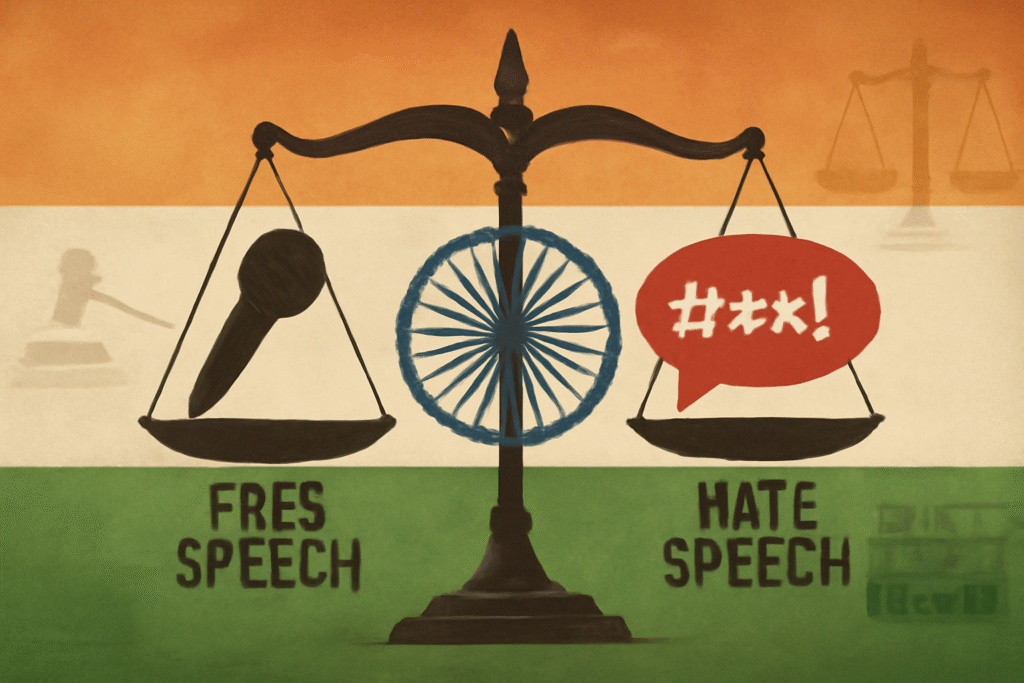Published On: September 3rd 2025
Authored By: Fatheena
VIT Chennai
ABSTRACT
Despite multiple legal provisions aimed at addressing dowry-related offences, there has been no significant improvement—the number of cases continues to rise, worsening each year. This article examines the existing dowry laws within the Indian legal framework and seeks to explore the reasons behind their poor implementation and enforcement. Further, it proposes practical reforms to bridge the gap between legislation and execution, aiming to make dowry laws more effective in protecting women from abuse and violence.
INTRODUCTION
At least 18 women die due to dowry-related issues every day in India.[1] Yes, you read that right. Gone are the times when dowry was treated as a token of love given by the bride’s family to the groom’s family during the ceremony of marriage. These days, the practice of dowry has completely changed. It is treated as a transactional price given by the bride’s family to the groom’s family in order to secure a woman’s marriage. It makes the bride seem like a commodity, turning marriage into a business partnership rather than a bond. And even worse, dowry has evolved into a symbol of status, pride, and reputation.
Women are often forced into marrying a man just because the dowry demands are affordable. In some cases, parents get their daughter married to a guy from a well-off family—even if the dowry demands are high—just to secure their social status.
Legally, dowry is defined as an amount of money or property which, in some countries, a woman’s family gives to the man she is marrying. Some families of the groom continue to demand dowry even after marriage. This puts immense psychological pressure on the bride and sometimes leads to unfortunate situations such as ‘dowry deaths.’
Dowry deaths usually involve a woman’s death, either by suicide or murder, resulting from abuse by her husband and in-laws over dowry disputes. These deaths often involve all kinds of abuse—physical, emotional, or verbal—when a woman does not fulfill the dowry demands put forth by her in-laws.
The question here is: despite having laws related to dowry, why do dowry-death cases still persist in our country? Has our legal system failed to protect those women?
LEGAL PROVISIONS RELATED TO DOWRY
The Indian Legal System has formulated specific laws related dowry, in order to protect women from dowry related harassment. The laws are stated below as follows:
Section 304B IPC/ Section 80 BNS:
This section defines ‘dowry death’, stating that when a woman dies of any injuries within seven years of her marriage and it is proved that she was subjected to any cruelty or harassment by her husband or his relatives in connection with dowry, such death will be considered as a “dowry death”.
Section 498A of IPC/ Section 85 BNS:
This section aims to punish those who subject a woman to abuse, specifically relating to dowry. It states that if a husband, his in-laws or relatives shall be subjected to imprisonment up to three years and shall also liable to fine, upon subjecting a woman to dowry-related cruelty.
Section 89 of BSA
According to this section, when a woman dies within seven years of her marriage under suspicious circumstances, and it is proven that there had been dowry related disputes during the time of marriage, it shall be automatically presumed that it is a case of dowry death, especially when no other cause of death is proven.
WORDS SPEAKING MORE THAN ACTIONS
One might wonder, “Despite all the laws being framed, why does dowry related offences still persist in our country?” Let me tell you why. The laws have been just written on paper. But enforcement? It’s weak, and improper. The blame for this failure cannot be just put on one segment of our society, it is a blame to be shared among the legal authorities, the policemen, and the society itself.
The most common reasons for the weak enforcement of the dowry laws and the growing rates of dowry abuse cases are as follows:
Police Negligence:
In most cases, the police authorities fail to take dowry abuse cases seriously. There are frequent delays in registering the FIR (First Information Report), which consequently delays the entire legal process. Even when action is taken, there are instances where the accused or their family bribe police officials to weaken or withdraw the complaint, often resulting in outcomes that favor the accused. Negligence and corruption remain two of the most significant reasons why justice is frequently denied in such cases.
Poor evidence/proof of abuse:
When it is said that a woman is abused, it is generally interpreted in a way that abuse is always a physical one – wounds/bruises on body, sign of rape or physical torture is accepted as a valid evidence when it comes to dowry abuse cases. But little do we realize the fact that abuse isn’t always physical. Women are being abused verbally and emotionally but they hide their pain behind a smile. This is one of the reasons most dowry cases victims do not get the justice they deserve. There exist women who are emotionally or verbally abused in order to get more dowry. Ignore of non-physical forms of dowry related abuse is a great drawback in our legal system.
Judicial delays and negligence of courts:
It is a well-known fact that Indian Courts have an overwhelming number of pending and ongoing cases. This results in the courts’ delays in hearing cases, including those of dowry abuse. And more often, since the number of cases are never-ending, cases involving women-related offences such as sexual assault or dowry abuse are given lesser priority. This scenario becomes even more worse if the victims belong to poorer or marginalized sections of the society.
Societal pressures:
Here comes the most overlooked but an underrated reason why dowry abuses often go unattended. It is because of the society, and its stigma on the female gender. Every parent wishes to get their daughters married to bride from a good family. ‘Good’ often means in terms of status and reputation, and not personality. There are instances where daughters inform their parents that post-marriage, the husband and in-laws’ behavior has changed, they are abusing her and demanding more dowry. This is where the plot changes. Instead of helping the woman fix her marriage or in worst cases, help her quit it, they say “Adjust. If you take any drastic decision now, it’ll ruin our reputation. What will our relatives talk about us? Adjust, for us”. And in most cases, the woman has no choice but to ‘adjust’ as they say. This is the root cause of why most women do not come out of their abusive marriages, even in cases of dowry.
THE FLAWS IN THE MAKING – LEGAL GAPS IN DOWRY LAWS
Adding on to the flaws in our society, and the system, it must also be noted that though the laws seem to be good on paper, there are some gaps in the laws making it difficult to implement the law in real life:
The vagueness of Dowry’s legal definition:
As per the definition of dowry in Indian Law, dowry refers to (any form of) gifts given to the groom’s family only at the time of marriage. There are cases where the woman is abused days after marriage, due to dowry demands. But this definition of dowry does not explicitly include gifts post the marriage, creating a sense of vagueness.[2]
Room for misuse of laws:
As per the Criminal Laws of India, if a woman dies within seven years of marriage and there is evidence that she was subjected to cruelty or harassment in connection with dowry demands, the law automatically assumes that her death is a dowry death. This is where there is a great chance for misuse. This shifts the burden onto the accused to prove their innocence, which can lead to misuse in false cases or wrongful convictions without strong direct evidence. And moreover, if the woman dies with seven years of her marriage, when there is no solid proof of any reason to her death, it will be presumed as a case of dowry death even if the actual reason is completely unrelated. This seven-year time frame is too vague, in this aspect. This rule of presumptions can result in misuse of the law or lead to wrongful convictions.[3]
Moral of the story? The law is weak, both in design and execution.
SUDDEN? NO, YOU DIDN’T SEE IT COMING
When a woman dies, either by suicide or murder, due to dowry-related issues, it is always considered as a ‘sudden’ death. But little do they know that the so-called sudden death was followed by a long history of abuses and tortures.
This is how a dowry death happens, and it is not so sudden:
First off, it starts with verbal abuse – gradually. Its starts with phrases like “You’re worthless”, “I shouldn’t have married you” or “You’re fit for nothing” Then, the woman will be tortured emotionally. She will be blackmailed to give more dowry. The groom’s family isolate her, treat her like a slave, and manipulate her emotions. If none of these tantrums work, the husband and the in-laws use sexual assault and physical violence as a means of fulfilling their never-ending dowry demands. Finally, the woman’s body and mind can take no more, she decides to end herself. And in worse cases, she is burnt alive or murdered by her in-laws and husband itself.
This long cycle of torment and torture is what is called as ‘sudden’.
REAL LIFE CASES AND LANDMARK JUDGEMENTS[4]
Arnesh Kumar v. State of Bihar, (2014) 8 SCC 273
Arnesh Kumar and his family members were accused to be demanding excessive dowry by Arnesh’s wife. The police abruptly arrest them without even verifying the genuineness of the complaint. This Supreme Court held that it was not a healthy practice followed by the police, as per Section 498A IPC/Section 85 BNS and it laid down the Arnesh Kumar Guidelines. These guidelines aim to avoid unnecessary and false arrests, while still managing to protect real victims of dowry abuse.
Satvir Singh & Ors. v. State of Punjab & Anr., (2001) 4 SCC 375
As per the facts of this case, a woman was harassed by her husband and in-laws, for money and valuables (dowry) even after marriage. Unable to bear the torture, she tried to take her own life. The woman’s family filed a complaint against the husband and in-laws under the Dowry Prohibition Act, 1961. However, it was ruled that demands after marriage cannot be considered as dowry as per the legal definition of dowry.
Satbir Singh & Anr. v. State of Haryana, AIR 2021 SC 2627
In this case, a young married woman died suddenly. It was alleged by her family that she had been tortured for dowry before her death. As per the rue of presumption, if a woman dies under unnatural circumstances “soon before her death” and dowry related abuse is proven, it is presumed to be a dowry death.
The Supreme Court clarified that “soon before her death” doesn’t have to mean just a few days or hours before the death. It can cover harassment that happened over weeks or months, as long as there’s a clear connection between the cruelty and the death. This makes it easier to prove dowry death in court, even when abuse wasn’t immediately before the death.
WHAT SHOULD WE DO ABOUT IT? – REFORMS NEEDED
Firstly, the police authorities must be provided with specialized training to handle dowry-related cases in an effective manner. They must be advised to follow ethical investigative practices and resisting external influences such as bribery. Officers that are found engaging in malpractices such as delaying FIR registration, accepting bribes, or mishandling evidence – should face strict disciplinary action, including suspension, dismissal, or criminal prosecution where necessary. This ensures accountability, and transparency
Secondly, it should be made legally mandatory for police authorities to properly document every dowry abuse complaint they receive. This documentation must include all relevant details, such as the nature of the abuse, previous instances of harassment, and any demands made. Such structured record-keeping will promote transparency and ensure accountability during the investigation process, reducing the scope for manipulation or suppression of complaints.
Delays in investigation of dowry cases usually happen due to the low-prioritization of these cases. In order to address the issue effectively, the establishment of specialized fast-track courts dedicated to handling dowry-related and domestic abuse cases could be an effective solution. These courts, while completely focusing on dowry cases, would ensure speedy trial and reduces the financial burden of the victims. Also, the judges must be trained well enough to handle these cases with a more victim-centric approach.
The courts must adopt broader evidentiary norms; they must not treat physical injuries as the sole proof of abuse. Emotional abuse, verbal abuse, psychological abuse, abuse/threatening via electronic communication should also be taken into consideration.
It is an urgent need to ensure availability of more shelters, and legal aid help for those women who have successfully managed to get out of an abusive marriage. This kind of accessible support can help victims escape abusive environments and pursue justice without fear or isolation.
CONCLUSION
From the above analysis it is evident that despite the existing laws on dowry abuse and related deaths, the gap between the laws and its implementation rate remains significant. Factors like police negligence, corruption, weak evidentiary standards, procedural delays, and lack of victim support continue to hinder the process. Legal reforms are alone not enough; the whole system must be reformed through stricter law enforcement, broader evidentiary acceptance, dedicated fast-track courts, and comprehensive victim support services. Only by addressing these practical shortcomings can the legal framework truly protect women from dowry-related abuse and ensure that justice moves beyond paper promises.
REFERENCES
[1] National Crime Records Bureau, Crime in India 2022, Book 1 (Ministry of Home Affairs 2024), https://www.ncrb.gov.in/uploads/nationalcrimerecordsbureau/custom/1701607577CrimeinIndia2022Book1.pdf.
[2] Arvind Lakhawat, Dowry Laws: Loopholes and Possibilities of Misuse, Legal Services India (July 31, 2013), https://www.legalservicesindia.com/article/2034/Dowry-laws:-Loopholes-and-Possibilities-of-misuse.html
[3] “Burden & Presumption in Dowry Death: A Legal Analysis,” Juslextra (Mar. 2025), https://juslextra.in/f/burden-presumption-in-dowry-death-a-legal-analysis
[4] “Landmark Cases on Dowry Prohibition Act, 1961,” LawBhoomi (2025), https://www.lawbhoomi.com/landmark-cases-on-dowry-prohibition-act-1961/.




